(update 2023-06-19)
ABOUT TANZANIA
Tanzania officially the United Republic of Tanzania, (Swahili: Jamhuri ya Muungano wa Tanzania), is a country in East Africa within the African Great Lakes region.
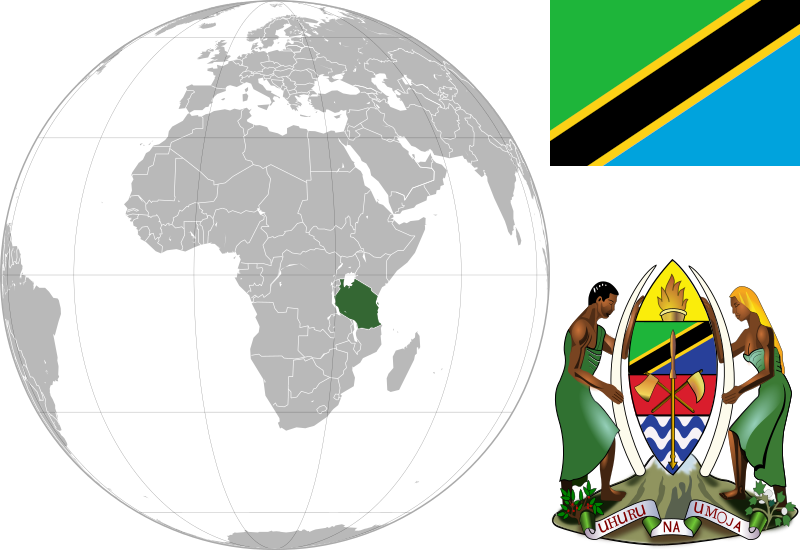
It borders Uganda to the north; Kenya to the northeast; Comoro Island and the Indian Ocean to the east; Mozambique and Malawi to the south; Zambia to the southwest; and Rwanda, Burundi and the Congo to the west.
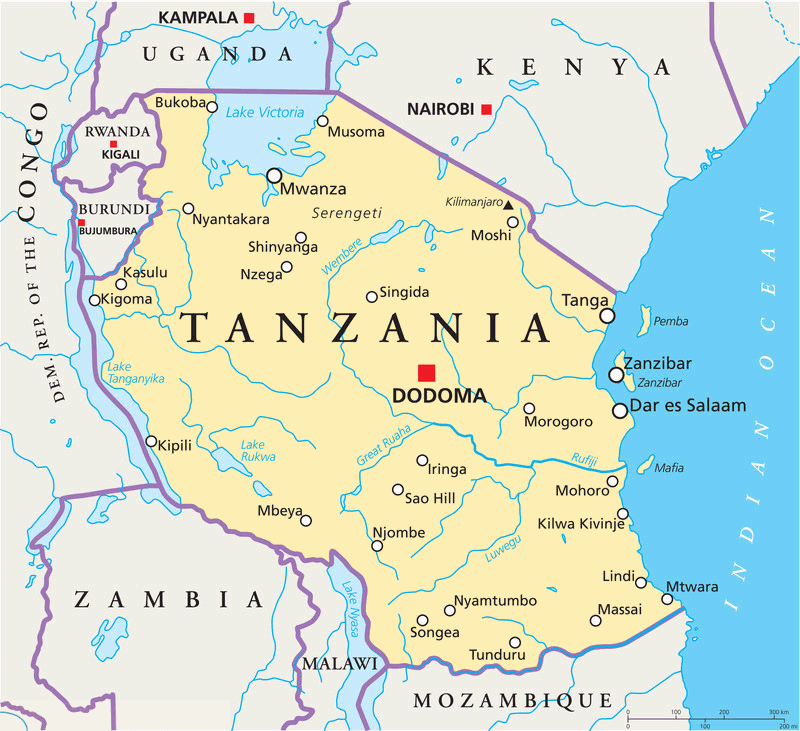
Mount Kilimanjaro, Africa’s highest mountain, is in northeastern Tanzania.
Dodoma is the capital city and Dar es Salaam which is the largest coastal city and the former capital of Tanzania remains the principal business and industrial area.
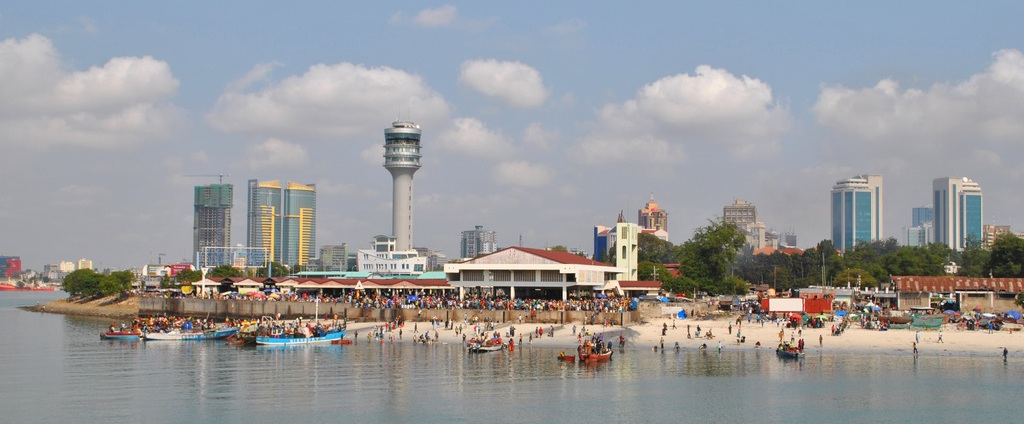
The number of people in Tanzania has increased from 44,928,923 in 2012 to 61,741,120 in 2022. It is expected to double in 2044.
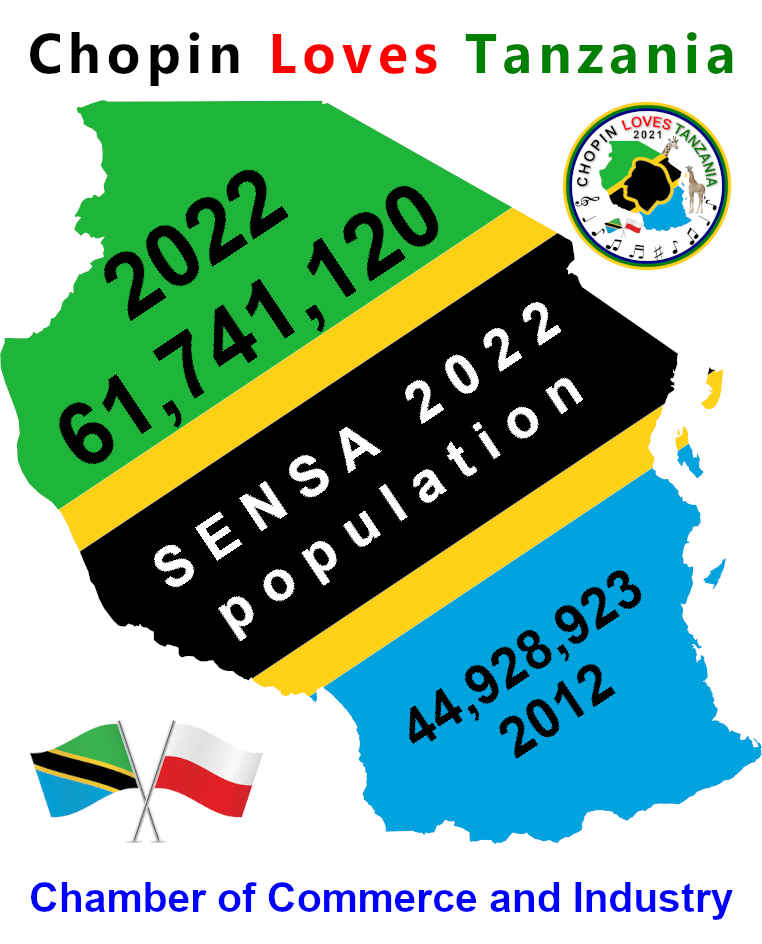
Tanzania has more than 120 ethnic tribes, the largest being the Sukuma (over three million), and the Chagga, Haya, and Nyamwezi with over one million each. Each tribe has its own language, however Swahili (Kiswahili) language is spoken and revered by all, and is a compulsory subject in schools.
Tanzanians have strong feelings of national pride and cohesion, and the use of a common language has enabled Tanzanians to resolve most internal conflicts without resorting to violence and keeping the country at peace. Swahili is the official language although English is widely spoken.
Swahili is used in parliamentary debate, in the lower courts, and as a medium of instruction in primary school. English is used in foreign trade, in diplomacy, in higher courts, and as a medium of instruction in secondary and higher education.
CULTURE
Tanzania has a harmonious national culture that is based on a subtle but strong social code of courtesy and respect with politeness, respect and modesty being virtues that highly valued in the community. Boys and men however commonly hold hands in public as a sign of friendship or comradeship. The country has strong collectivism culture which was influenced by the late Julius Nyerere father of the Nation who endorsed socialism in the Arusha Declaration of 1967 whereby since its inception people still living on mutual assistance and cooperation. Nyerere encouraged the use of Swahili to help unify the country’s many ethnic groups. In his quest for his people to identify themselves as one people the first president Julius Nyerere encouraged all Tanzanians to communicate in Swahili, which facilitated trade, political debate, nationalism and information.
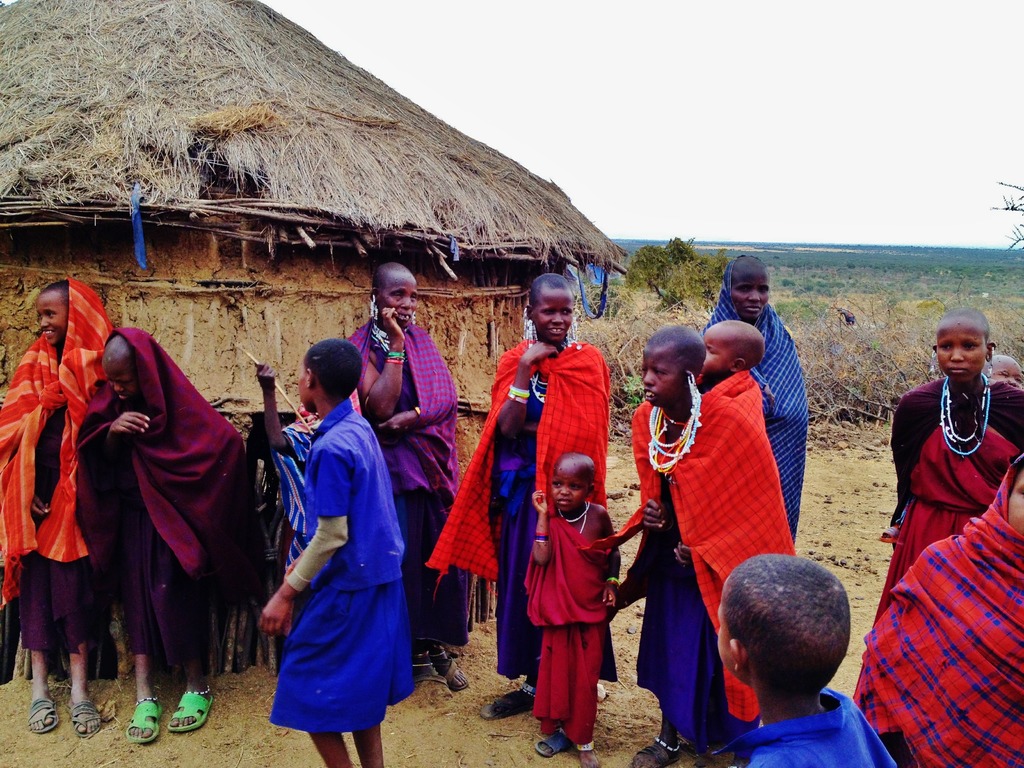
TOURISM
Tanzania is renowned with tourism destinations including the most famous national parks such as Serengeti, Ngorongoro Conservation Area and majestic Mount Kilimanjaro (dormant volcanic mountain), the highest mountain in Africa and the highest single free-standing mountain in the world: 5,895 metres (19,341 ft) above sea level and about 4,900 metres (16,100 ft) above its plateau base. The mountain is a major climbing destination attracting thousands of tourists worldwide. Because of its shrinking glaciers and disappearing ice fields, it has been the subject of many scientific studies.
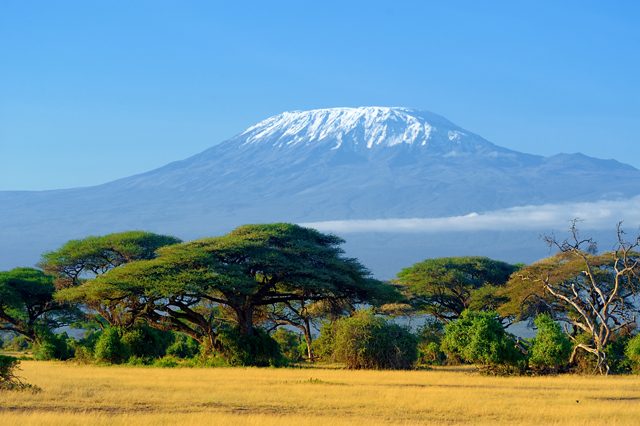
Other most popular things to do in Tanzania and the reason many people visit the country, are the safaris and wildlife related adventures, including annual wildebeest migration and the Big five (lion, buffalo, elephant, leopard and rhino) which can be spotted in any one of the country’s amazing wildlife parks and reserves.
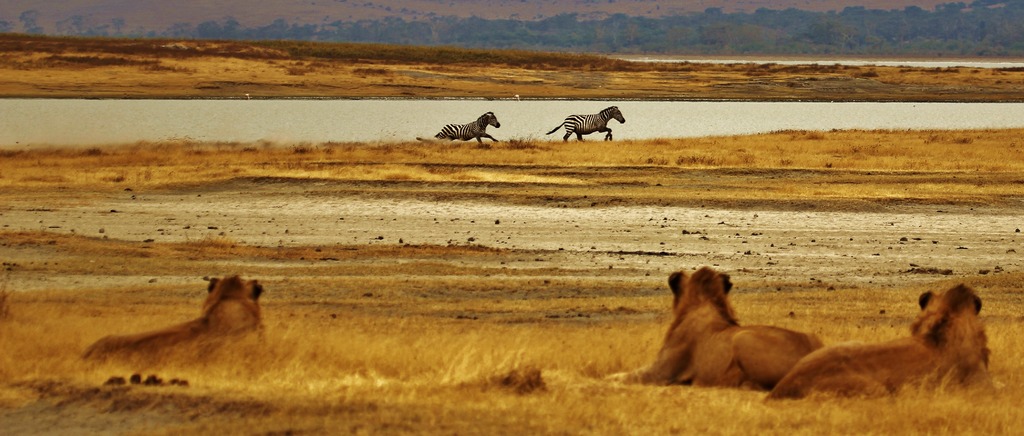
For those who want to spend some time soaking up the sun, the beautiful beaches of the Zanzibar archipelago. The island of Pemba and Mafia islands is another kind of natural wonder, appreciated by the scuba divers and snorkelers who come here from around the world to experience the coral gardens, colorful fish, and crystal clear waters.
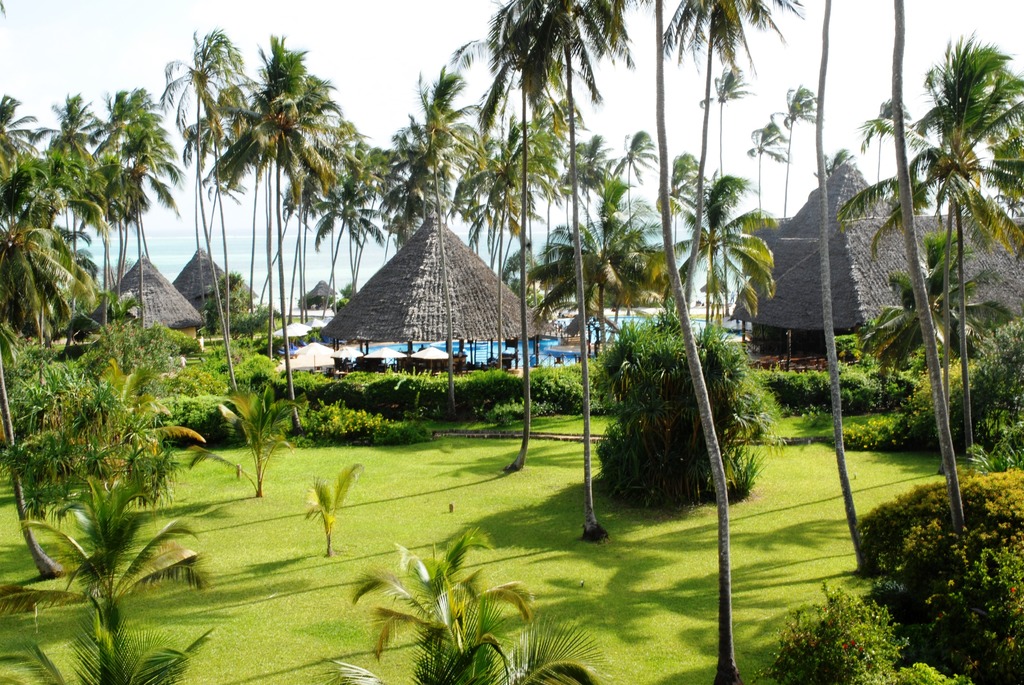
Corona & Tourism
Unlike most other countries, Tanzania does not require tourists to quarantine for 14 days, which means the well-known safari destination is likely to recover faster than its main competitor Kenya.
Since President John Magufuli boldly announced in June that Tanzania was “corona virus free” it has become a commonly heard refrain across the East African country. A small number of tourists started to return in July though most operators do not expect the sector to fully recover until a vaccine is in circulation. Data from the Tanzania National Parks Authority (Tanapa) shows that a total of 3,062 French tourists visited the Tanzanian parks during the three months period covering July, August, and September 2020, outshining the US with 2,327 holidaymakers. The third source markets of tourists were Germany (1,317 visitors), followed by the UK (1,051 visitors), Spain (1,050 visitors), India 844 (visitors), Switzerland (727 visitors), Russia (669 visitors), the Netherlands (431 visitors) and Australia (367 visitors).
“Many other countries that went into lockdown have suffered tremendously from an economic point of view,” says Mohammed Dewji, CEO of industrial conglomerate MeTL, Tanzania’s largest home-grown company. “Tanzania never went into lockdown and that is why I believe it will perform far better than all East and Central African countries.”
Tanzanian tourism sector was severely hit in 2020 after the outbreak of the COVID-19 pandemic and the suspension of international flights from America, Europe and Asia. According to Hamisi Kigwangalla, the former Minister for Natural Resources and Tourism, the number of tourists visiting the country dropped from an estimated 1,867,000 to 437,000 annually. However, Tanzania reopened its airspace for international passenger flights on 1st June 2020, and international airlines are now flying to and from Tanzania.
While addressing the parliament in official opening on 13th November 2020, President-elect John Magufuli said “the number of tourists to Tanzania increased from 1,137,182 in 2015 to 1,510,151 in 2019. Tourism revenues increased from USD 1.9 billion in 2015 to USD 2.6 billion in 2019. We plan to increase the number of tourists to 5 million by 2025 and revenues to USD 6 billion”.
ECONOMY
Although Tanzania’s economy is being put to the test by the COVID-19 pandemic, economic wise is better compared to other country as Tanzania was not badly hit by COVID-19 pandemic. With an economy that continues to grow, Tanzania’s unconventional approach to Covid-19 appears to be paying off, but the long-term effects of the “virus” are hard to predict.
While addressing the parliament in official opening on 13th November 2020, President-elect John Pombe Magufuli announced that in the next five years its government will put great emphasis on key economic sectors, especially agriculture, livestock, fisheries, industry, mining, trade and tourism.
“In the next five years we will put emphasis on factories that use the raw materials available in abundance in Tanzania. To attract investment in the manufacturing sector, we will continue to improve the business environment, including looking at tax issues and removing restrictions and bureaucracy”. “I want investors to get approval for their projects within 14 days, and for this I have decided that the Tanzania Investment Center (TIC) will be relocated from the Prime Minister’s Office to the President’s Office”.
“The number of tourists to Tanzania increased from 1,137,182 in 2015 to 1,510,151 in 2019. Tourism revenues increased from USD 1.9 billion in 2015 to USD 2.6 billion in 2019. We plan to increase the number of tourists to 5 million by 2025 and revenues to USD 6 billion”.
We will promote conference tourism and wildlife hunting; strengthening beach tourism, and building infrastructure enabling tourist ships to visit the country. In addition, we will continue to reduce taxes and levies.
Economic Growth
“We have faith that these steps will enable us to achieve our goals of economic growth of at least 8% a year, raise the income of Tanzanians, reduce poverty, and create 8 million new jobs. To achieve these goals, we rely heavily on cooperating with the private sector. So, I welcome the private sector in the country and abroad to invest in the sectors I mentioned. And I assure them that Tanzania is a good and right place to invest. Last year, we have started implementing our Blueprint for Regulatory Reforms to Improve the Business Environment in Tanzania. Thus, the trade and investment environment in Tanzania is expected to be the best over the next five years.
Over the past decade (2010-2019) Tanzania’s economy experienced strong growth with an average real GDP increase of 6.3% while in 2019, Tanzania’s GDP growth rate slowed to 5.8%. Tanzania’s GDP reached USD 55.5 billion in 2019, making it the 2nd largest economy in East Africa after Kenya and the 7th largest in Sub-Saharan Africa. The leading contributors to the economy of Tanzania in 2018 were services (37%), followed by agriculture (28%), industry and construction (27%), and others (8%).
In 2019, Tanzania’s annual inflation rate remained at 3.5%, similar to 2018, while it has significantly decreased from the 6.2% in 2010. The World Bank classifies Tanzania as a lower middle-income economy with a GNI per capita of USD 1,080 in 2019, against an average of USD 1,550 in Sub-Saharan Africa. Tanzania’s budget focuses on the country’s development plan to build an industrial economy and improve the welfare of the citizens. To facilitate this, the focus of Tanzania’s 2020/21 budget will be on projects that utilize raw materials within agriculture, mining, and natural gas. In 2018, Tanzania’s Foreign Direct Investment (FDI) net inflows were USD 1.1 billion representing an 18% increase compared to 2017 (USD 938 million). Tanzania is drawing external investments mostly to the mining sector, the oil and gas industry and agriculture. The United Kingdom is the largest foreign investor in Tanzania followed by India, China, Kenya, USA, Netherlands, South Africa, Canada, Germany and Oman.
Who are Tanzania’s main import partners?
Tanzania imports 4023 different products from 181 countries.
- the total import value (CIF) is US$ 8.79 billion;
- Tanzania is the 98th largest importer in the world;
- expenditure on most categories of imports has gone up, due to the construction of roads, bridges, ports, airports and the Standard Gauge Railway.
- China supplies US $1.5 billion in imports, commanding a 19% share of the import market.
- Closely following China is India, supplying Tanzania with goods worth US $ 1.17 billion, a market share of 15%.
- Next comes the United Arab Emirates, which exports goods worth US $596.05 million, 7.7% of the total imports.
- After the UAE comes Saudi Arabia, exporting goods worth US $469.11 million, or 6.1% or the import share.
- South Africa exports items worth US $415.15 million to Tanzania, 5.4% of the total imports.
- Japan also exports several items worth US $ 312.38 million, or 5.3% of the import market share.
- European countries are not left out – Germany leads the European countries with imports of US $ 231.5 million, a 3% share of the total imports.
- Switzerland also exports goods worth US $205.37 million to Tanzania or 2.7% of the total imports.
- The United States of America also exports a significant quantity of goods to Tanzania, US$ 202.89 million worth, or 2.6% of the import market share.
- Coming in tenth is Tanzania’s’ neighbor Kenya, who exports US$201.32 million worth of goods to Tanzania, 2.6% of the total imports.
The top 10 imports for Tanzania will be of great help to anyone in that country interested in starting an import business, is the list:
10. Chemical Products: A total of US$ 196,284,805 worth of these products is imported yearly for use in various Tanzanian industries.
9. Cereals: These include wheat, spelt, and meslin, cereals that are not available in Tanzania. A total of US$ 204,268,748 worth of these cereals is imported every year.
8. Iron and Steel: With the increase in construction projects in Tanzania, the demand for iron and steel has increased considerably. As such, the imports of these items currently stand at US$ 271,488,859.
7. Fats and Oils: Palm oil constitutes the largest amount of this import category. Tanzania currently imports US$278,496,797 worth of fats and oils every year.
6. Plastics: As the demand for good quality plastics from countries like China increases, so does the import expenditure on these products. The import expenditure currently stands at US$ 397,925,751.
5. Pharmaceuticals: Pharmaceuticals, previously ranked as Tanzania’s second-most popular import, currently cost US$ 425,232,633 yearly.
4. Electrical Machinery: Electrical machinery is currently in high demand, thanks to the increase in construction projects in the country. As a result, the import expenditure for this category currently stands at US$ 565,061,233.
3. Motor Vehicles and Parts: As the road network improves, more people are starting to purchase cars, hence the demand for motor vehicles and parts. The import expenditure from this category is currently US$ 598,497,887.
2. Industrial Machinery: The construction boom has led to an increase in demand for industrial machinery, leading to an increase in import expenditure. Currently, imports for industrial machinery are worth US$ 959,050,587.
1. Oil and Mineral Fuels: Because Tanzania does not produce any oil of its own, it imports US$ 1,973,297,783 worth of fuel yearly.
Tanzania Exchange Rates
On 12th August 2020, average market exchange rates for the Tanzanian shilling (TZS) against major currencies provided were: USD/TZS 2,325, GBP/TZS 3,033, EUR/TZS 2,737, TZS/RMB 0.003. The TZS weakened by more than 50% against the USD over the past five years, from an average annual exchange rate of 1,735 in 2015 to 2,325 in 2020. Still, the Tanzanian shilling remained stable during 2019 and depreciated by 0.7% against the USD. The low volatility was in part due to interventions by the Bank of Tanzania (BoT) aimed at keeping the interbank foreign exchange market steady.
NATURAL RESOURCES
Tanzania is a country that is endowed with a lot of natural resources, a favorable climate, political stability and an excellent geographical location in the region, which makes it accessible to potential export markets in the region, the Gulf States and South Asia. Dar es Salaam is the largest port of entry in Tanzania and serves as a gateway to landlocked neighboring countries.
It has a long coastline and attractive beaches, amazing wildlife parks and reserves, minerals, forests, and the three greatest lakes in the African continent and the Indian Ocean form most of its borders. For example, Tanzania has about 33.5 million hectares of forests and woodlands with approximately 13 million hectares of this total forests cover protected under the forests reserve regime. It has 730,000 metric tons of fishery resources that could be harvested annually without any harm to their re-generational capability.
Mining
Opportunities in the supply chain:
- value adding ventures particularly in gemstones and jewellery manufacturing (e.g. lapidary, cutting, polishing, etc);
- supply of mining services such as drilling, airborne geophysical surveys or refining. This also includes supply and/or hiring of equipment for large and small scale miners as well as contract mining;
- training in gemstone cutting and polishing;
- training in jewelry designing & manufacturing;
- training in gemology;
- training in diamond grading;
- establishing laboratory for testing and certification of gemstones;
- gemstone treatment.
Mining is one of the leading sectors in Tanzania, with the value of mineral exports increasing tremendously each year. The minerals found in Tanzania include metallic minerals, industrial minerals, and energy minerals. Minerals export accounted for USD 2.3 billion of the total value of Tanzania’s export in 2019 (i.e. 45%).
Minerals available in Tanzania include gold, diamonds, gemstones (such as rubies, aquamarine, tanzanite, sapphire, emerald, rhodolite, opal, zircon, alexandrite, garnets, tourmaline, spinel, peridot, iolite) Iron and Base metals (nickel and cobalt), platinum group metals: (platinum, palladium and rhodium), Industrial minerals (soda ash, kaolin, salt along the Coast and inland lakes, vermiculites, limestone, silica sands, phosphate, gypsum, mica, dimension stones i.e. granites, travertine, marbles, quartzite), coal resources and natural gas.
The mining sector contributes approximately 3.0% to annual GDP. In his speech during the official opening of the 12th Parliament of Tanzania on 13th November 2020, President-elect John Pombe Magufuli said “It is our belief that the mining industry will contribute at least 10% of GDP by 2025.”
In the last decade, the country has witnessed growth in mining sector with reputable mining companies e.g. Barrick Gold, Ashanti Anglo-Gold, and Resolute investing in large-scale mines. Tanzania is the 4th largest gold producer in Africa after South Africa, Ghana and Mali and is the sole producer of the precious stone Tanzanite in the world. Gold production currently stands at roughly 40 tonnes a year, copper at 2980 tonnes, silver at 10 tonnes and diamond at 112670 carats. Business Monitor International (BMI) forecasts average annual growth in the mining sector of 7.7 per cent between 2013 and 2015. BMI also predict a doubling in value of the sector to around 1.28 bilion USD.
The Tanzania mining industry remains attractive to investors, given the next few years of significant diversification to the mining of nickel, uranium and coal. There is also availability of investment incentives and supply chain opportunities in the mining sector.
Moreover investments in coal would receive a boost as Tanzania looks to coal-fired power stations to offset energy shortages. Gold mining exploration and gold production, gem stones mining and trading, as well as, small and artisanal mining activities are experiencing considerable growth as well.
Tanzania Metallic Minerals
The metallic minerals found in Tanzania include gold, iron, silver, copper, platinum, nickel, and tin. Tanzania Gold reserves in Tanzania are estimated at about 45 million ounces.
Gold

Gold production in Tanzania stood at 39 tons in 2018, compared to 43 tons in 2017 (-10%) and 40 tons in 2014 (-3%). Tanzania’s gold production increased by more than 700% over the past 25 years, from 5 to 40-50 tons per year, while South Africa’s production of gold decreased from over 500 tons in 1990 to 117 tons in 2018. Gold exports account for more than 90% of Tanzania’s total mineral exports with USD 1.5 billion in 2018, compared to USD 943 million in 2014, an increase of 59%.
Check the opportunity of gold from Tanzania through Concert Coordinator:
Budoss Tanzania Minerals Limited
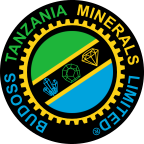
https://budosstanzaniaminerals.com/
Minerals for the development of Tanzania
Iron
Tanzania iron ore reserves in Tanzania are located mainly in Liganga, Uluguru Mountains, Mbabala near Lake Tanganyika, Karema, Manyoro Gondite, and Itewe. The Liganga iron ore mine holds the biggest iron resources in Tanzania with proven reserves of 126 million tons. Tanzania China International Mineral Resources Ltd (TCIMRL) has invested USD 1.8 billion at Liganga for the establishment of an iron ore mine and iron and steel complex to produce 1.0 million tons per year of iron and steel products, vanadium pentoxide and titanium dioxide. The project is expected to be completed by the end of 2020.
Diamonds
Diamonds produced by Petra Diamonds, through its subsidiary Williamson Diamonds Limited, holds 75% of the ownership rights over the mine, while the remaining 25% is owned by the Government of Tanzania. According to Petra Diamonds, the Williamson mine contains large diamond resources of approximately 38.1 million carats. In 2019, the company achieved the highest level of production at the mine in over 40 years, with 399,615 carats produced (2020:298,130 carats).
Tanzanite
Tanzania is the sole producer of this precious gemstone, this peculiar mineral is only found in Tanzania. At the time of writing this Nov 2020 Tanzania had only one major investor, Tanzanite One and other small scale miners on Tanzanite.
Tanzanite is mined in a very small mining area (approximately 7 km (4.3 mi) long and 2 km (1.2 mi) wide) near the Mererani Hills, near Mount Kilimanjaro. Tanzanite is used to make ornaments. It is one of the rarest gemstones on Earth, and one local.
The precious stone’s appeal lies in its variety of hues, including green, red, purple and blue.
Its value is determined by rarity – the finer the color or clarity, the higher the price. The production of tanzanite is volatile standing at 21.5 tons in 2017, compared to 30.9 tons in 2016 and 6.4 tons in 2015.
The gemstone was given the name ‘Tanzanite’ by Tiffany & Co. after Tanzania, the country in which it was discovered. The scientific name of “blue-violet zoisite” was not thought to be sufficiently consumer friendly by Tiffany’s marketing department, who introduced it to the market in 1968. In 2002, the American Gem Trade Association chose tanzanite as a December birthstone, the first change to their birthstone list since 1912.
The record of obtaining the heaviest stone was made by a small-scale miner in Tanzania who becomes an overnight millionaire after selling two rough Tanzanite stones – the biggest ever in the country. Saniniu Laizer earned £2.4m ($3.4m) from the country’s mining ministry for the gemstones, which had a combined weight of 15kg (33 lb).
Coal
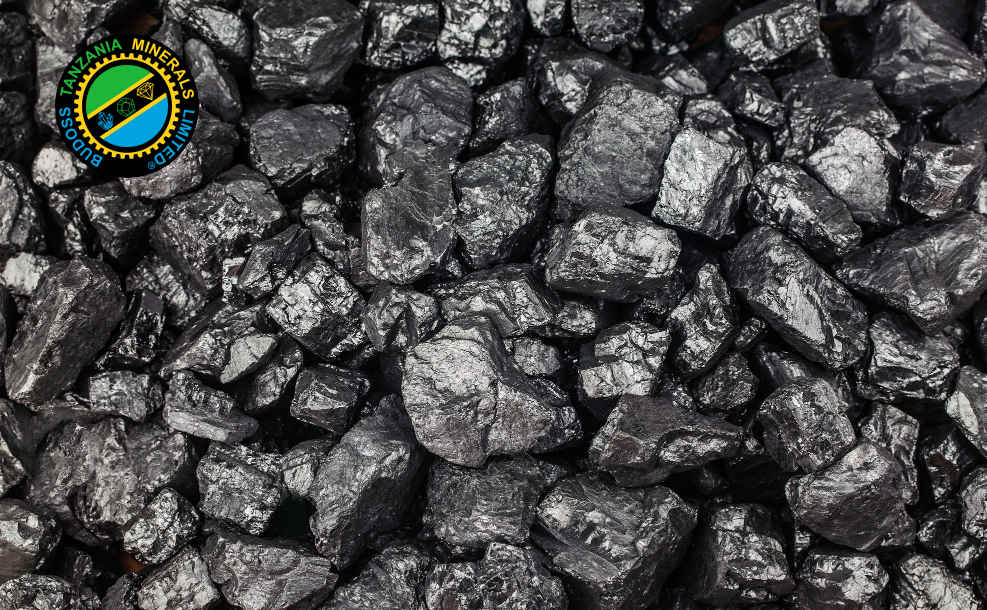
Coal reserves in Tanzania are estimated at 1.9 billion tonnes, 25% of which are proven. Tanzania’s coal production reached 712,136 tonnes in 2019, compared to 257,321 tonnes in 2015 (+177%).
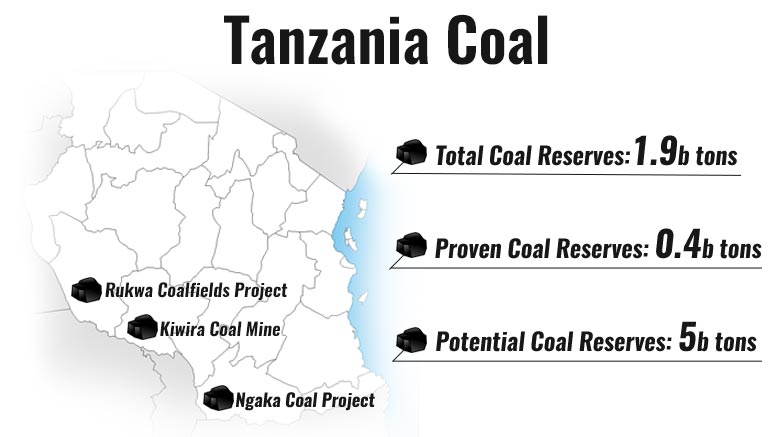
Coalfields with the highest potential are Ketawaka-Mchuchuma in the Ruhuhu Basin, Ngaka fields in the South-West of Tanzania, and Songwe Kiwira fields. Coal is currently exploited on small scale at Kiwira Coal Mine in Mbeya Region and Tancoal Energy Limited Mine at Ngaka in Ruvuma Region.
Check the opportunity of coal from Tanzania through Concert Coordinator:
Budoss Tanzania Minerals Limited

https://budosstanzaniaminerals.com/
Minerals for the development of Tanzania
Uranium
Tanzania has found huge deposits of uranium mainly in Namtumbo (Mkuju), Bahi, Galapo, Minjingu, Mbulu, Simanjiro, Lake Natron, Manyoni, Songea, Tunduru, Madaba, and Nachingwea. One of the major uranium development projects is the Mkuju River Project with estimated reserves of 182.1 million tons. The project’s operator is Mantra Tanzania, a subsidiary of Russia’s Uranium One Group. In 2017 Mantra suspended further development of the project due to low uranium prices.
TRANSPORT
Transport system in Tanzania is categorized in five types of modes. These are air, roads, water, railway and pipelines. Tanzania’s national development strategy stipulates the need for extensive and efficient transport infrastructure to support economic growth. With this context therefore, the government of Tanzania has formulated legal, regulatory and institutional framework to guide and regulate all transport sub sectors for sustainable operations in the transport system in the country (2011).
The Tanzanian transport sector comprises surface transport (including roads, railways), inland waterways (lakes and rivers), air transport, and sea transport. Road transport is the most widely used form of transport in Tanzania, carrying over 90% of the passengers and 75% of the freight traffic in the country.
The road network is 86,472 kilometres (53,731 mi) long, of which 12,786 kilometres (7,945 mi) is classified as trunk road and 21,105 kilometres (13,114 mi) as regional road. The rail network consists of 3,682 kilometres (2,288 mi) of track. Commuter rail service is in Dar es Salaam only. Julius Nyerere International being the largest and the busiest. Ferries connect Mainland Tanzania with the island of Zanzibar. Several other ferries are active on the countries’ rivers and lakes.
Railway
Tanzania has two railway line systems; one passing through northern and central Tanzania from Dar es Salaam extending towards Tabora, Kigoma, Mwanza and Tanga/Moshi managed by Tanzania Railways Limited (TRL). The other line is managed by Tanzania Zambia Railway Authority (TAZARA). TAZARA is serving southern portion of the country extending from Dar es Salaam into Kapiri Mposhi in Zambia. Construction of major central railway line from Dar es Salaam to Tabora was completed in 1912 while Tabora to Kigoma was ready by 1914. The line connecting Tabora and Mwanza was completed in 1928. The northern line from Tanga to Mombo was built in 1905 and reached Moshi in 1911 and Arusha in 1929. TAZARA line was built from 1970 and completed in 1975.
Currently over 95% of the traffic leaving the port of Dar es Salaam is transported by road to the detriment of the road network. It is thus expected that the upgrading of the rail sector, especially the Dar es Salaam Isaka-Mwanza link, will increase freight and passenger capacity as well as release pressure on the road network. The SGR is also expected to reduce the travel times for both goods and passengers. The Project will also reduce transport costs and enhance economic development and people mobility.
Currently the government of Tanzania is undergoing a new mega project of constructing a new Standard Gauge Rail (SGR), a historical milestone for Tanzania. For the first time in over 50 years, Tanzania’s transnational railway is being modernized. The modernization is a valuable contribution to Tanzania’s future development to meet an increasing demand for the transportation of passengers and improve the domestic supply network.
The Government of the United Republic of Tanzania (GoT) through the Reli Assets Holding Company (RAHCO), currently rebranded as Tanzania Railway Corporation (TRC), is embarking on a major railway revitalization program in the country through the rehabilitation and construction of new railway line links. The GoT intends to construct a Standard Gauge Railway (SGR) from Dar es Salaam to Mwanza via Isaka (1,219 km). This partly follows the African Union (AU) and East African Community (EAC) decision in 2006, which was that all new railway development projects on the continent would be to a standard gauge specification (1,435 mm). TRC intends to lay a separate SGR line alongside the existing Metre Gauge Railway (MGR) along the entire length from Dar es Salaam to Mwanza, via Isaka. The implementation of the SGR project is being undertaken in phases. Lot 1 (Dar es Salaam to Morogoro) and lot 2 (Morogoro to Makutopora) have a total length of approximately 541 km.
This railway of its own kind in Tanzania since colonial era is intended to ease the transfer of goods between the port of Dar es Salaam and to neighboring country cities of Kigali, in Rwanda and subsequently to Bujumbura, in Burundi, and to Goma, in the Democratic Republic of the Congo. From the lake port of Mwanza, surface water ferries are expected to transport goods between Mwanza and Port Bell and Bukasa Inland Port, in Kampala, Uganda’s capital city.The SGR system in Tanzania, in conformity with Rwanda and Uganda is designed to use electricity to power its locomotives.
Railway transport is the second most important mode of transport after road and critical for long distance freight along the main transport corridors in Tanzania. Tanzania has a total of 3,676 kilometers of railway lines operated by two railway systems, Tanzania Railways Corporation (TRC) and Tanzania – Zambia Railways (TAZARA). The mainline of TRC comprises the central corridor between the port of Dar es Salaam in the east, linking central and western areas of the country and terminating at Kigoma on Lake Tanganyika in the west. The TAZARA line is 1,860 kilometers in length, of which 975 kilometers is in Tanzania and 885 kilometers in Zambia.
Air Tanzania
There is smooth means of air transport locally and abroad. In the past 5 years the government brought 8 flights and intends to add more flights to make 11 by the end of 2022.
The total number of air passengers in Tanzania reached 6.2 million in 2019, compared to 5.2 million in 2015, representing an increase of 18%. Currently (2020), there are 19 airline operators in Tanzania, including some of the leading international air carriers such KLM, Qatar Airways, and SWISS.
The Julius Nyerere International Airport (JNIA), Tanzania’s new state-of-the-art terminal located in Dar es Salaam, is the largest and busiest airport in Tanzania, accounting for over 70% of Tanzania’s air passengers. In August 2019, Tanzanian President John Pombe Magufuli inaugurated Terminal 3 of the JNIA. The new terminal, which cost USD 314 million, set the airport capacity at 8 million passengers annually. The new terminal III building at the JNIA will have capacity to park 24 large aircraft at once.
In 2019, the African Development Bank (AfDB) approved a USD 272.12 million loan to Tanzania for the construction of a new international airport in the capital Dodoma. The new airport will be built in the district of Msalato, 12 kilometers from the capital Dodoma. The new facility is expected to handle at least 50,000 aircrafts and one million passengers per year. Expanding the airport is part of the Tanzanian government’s plan to transform Tanzania into a regional hub and boost the country’s tourism sector. The JNIA terminal III project is designed to accommodate growing traffic and boost tourist arrivals in Tanzania. Tanzania currently relies the Jomo Kenyatta International Airport (JKIA) in Kenya to receive some of its tourists as some major airlines, such as British Airways, currently do not fly to its airports due to low traffic levels.
Tanzania Water Transport
Tanzania has a coastline of about 720 kilometers on the Indian Ocean, and also borders Lake Victoria, Lake Nyasa, and Lake Tanganyika. Both sea and inland waterways ports in Tanzania are managed and operated by the Tanzania Ports Authority (TPA). The TPA’s main Indian Ocean ports are Dar es Salaam, Mtwara, and Tanga. Minor seaports serving coastal traffic include Lindi, Kilwa Masoko, Mafia Island, Bagamoyo, Pangani, and Kwale. Dar es Salaam is Tanzania’s principal port with intrinsic capacity of 10.1 bilion tonnes per year. The port handles over 92% of the total maritime ports’ throughput. The port serves land-linked countries of Malawi, Zambia, Democratic Republic of Congo, Rwanda, Burundi, and Uganda. These countries are connected to the port through two railway systems (TRL-1.0 metre gauge and TAZARA-1.067 cape gauge), road network, as well as the TAZAMA oil pipeline to Zambia.
TPA also operates Tanzania’s lake ports, maintaining around 20 ports on Lake Victoria. Some major ports include Bukoba, Kemondo Bay, Musoma, and Nansio. Principal lake ports on Tanganyika include Kigoma and Kasanga. Additionally, there are 15 smaller ports along the lake. These ports provide trade connections between Burundi, Eastern Democratic Republic of the Congo, and Zambia. Lake Nyasa has 4 important ports, at Itungi, Mbamba Bay, Liuli, and Manda. There are up to 10 other smaller TPA ports on the lake that facilitate passenger movement along the lake and between the countries of Malawi, Mozambique, and Tanzania.
Travelling around the Business city of Dar es Salaam
Tanzania’s largest city, Dar es Salaam is a major transport hub for the East Africa region. The city’s port handles much of the region’s international trade. The system of public transport in Dar Es Salaam is good making travelling around Dar Es Salaam a relatively simple process. However one of the main problems associated with the city is traffic problems during rush hour which can make travelling around Dar Es Salaam extremely tiring.
Dala Dala
Dala Dalas are privately owned minibuses which travel along set routes and are the main mode of public transport in Dar Es Salaam.
This is the cheapest way to travel but on comfort level, not so much especially during the peak hours of the day where there are a lot of people on route. First and last stops are shown in the front window, but routes vary, so confirm with the conductor that the driver is going to your destination.
DART
This is a modern town buses means of transport. In 2018, Dar es Salaam won the Sustainable Transport Award for launching the first line of its long planned Bus Rapid Transit (BRT) system, Dar es Salaam Rapid Transit (DART). DART, the first BRT in the region, is an ambitious urban transport project. Located on a main road leading into the city, the BRT reduced travel time for some commuters by over half, reducing 2 hour commutes to 45 minutes in one direction. With 21 kilometers completed, DART is already providing a massively-improved transit experience to approximately 172,000 passengers a day. DART is showing what is possible and has already inspired other cities, such as Nairobi and Addis Ababa, to begin work on their own systems.
DART began operations on 10 May 2016 in Dar es Salaam, Tanzania. The route is serviced by a fleet of 140 Chinese built Golden Dragon buses, providing express and local service for 18 hours daily from 05:00am to 11:00pm.
The Dar Rapid Transit (DART) project in Dar es Salaam is gradually taking over old dalla-dalla routes. The Kimara–Kivukoni line of the new system runs express buses between the city centre and Ubungo (TZS 650, about 20 minutes), stopping en route at both Ubungo Bus Terminal and Ubungo-Sheikilango, and in the city centre at Kisutu St, Old Posta Transport Stand and Kivukoni. Purchase your ticket at any station in advance of boarding. If the DART is handy for your destination we would definitely recommend taking, over a Dala Dala.
Railway
Travel to urban and sub-urban parts of Dar es Salaam is provided by the Dar es Salaam commuter rail, however this has limited destination and is operating at peak hours only. The service has two routes, TRL line operates a 20 km track from Pugu Station to the City Centre. TAZARA line offers two routes on its 20.5 km rail network. The first from its station in Dar es Salaam to Mwakanga which lies on the outskirts of the city.
Taxi/Bolt/Uber
Taxis are the most expensive form of moving around the city, however with Uber or Bolt are the smartest and cheaper way to move around in cities. Taxis do not have meters and fares should be discussed beforehand. What you can do is ask for the price and then bargain your way to a better price. It is all about bargain in Dar es Salaam.
Ferry
The passenger and vehicle Kigamboni Ferry operates daily from early morning until late evening between Kivukoni Front and Kigamboni, just across the channel, and the gateway to Dar es Salaam’s southern beaches. There is now a bridge which takes you to the city – but we still prefer the ferry.
Bajaji
Another recent addition to the transportation in Dar es Salaam is the bajaji. These are motorised tricycles known as Tuk Tuks in south east Asia. Although now not allowed in the city centre you will see them travelling all over Dar Es Salaam. They offer you the flexibility of a taxi but at a significantly lower price.
Boda Boda
Boda bodas are motorcycle taxis commonly found in East Africa. While motorcycle taxis like boda bodas are present throughout Africa and beyond, the term boda boda is specific to East Africa. In Kenya, they are more frequently called piki pikis. The motorcycles offer a quick means of transport in Dar es Salaam and other cities. Most of the city’s residents prefer boda bodas to commuter buses because they can more easily weave through traffic jams. However the means of transport is very risk causing road hazards and collisions and unnecessary injuries and deaths. This kind of transport should be the last resort.
Support Tanzania by watching the online broadcast from the Concert:

Become a concert Sponsor. See the List of Sponsors involved in the performance of the Concert.
Grow your business with the support of the Chamber of Commerce and Industry ![]() CHOPIN LOVES TANZANIA
CHOPIN LOVES TANZANIA ![]() .
.

